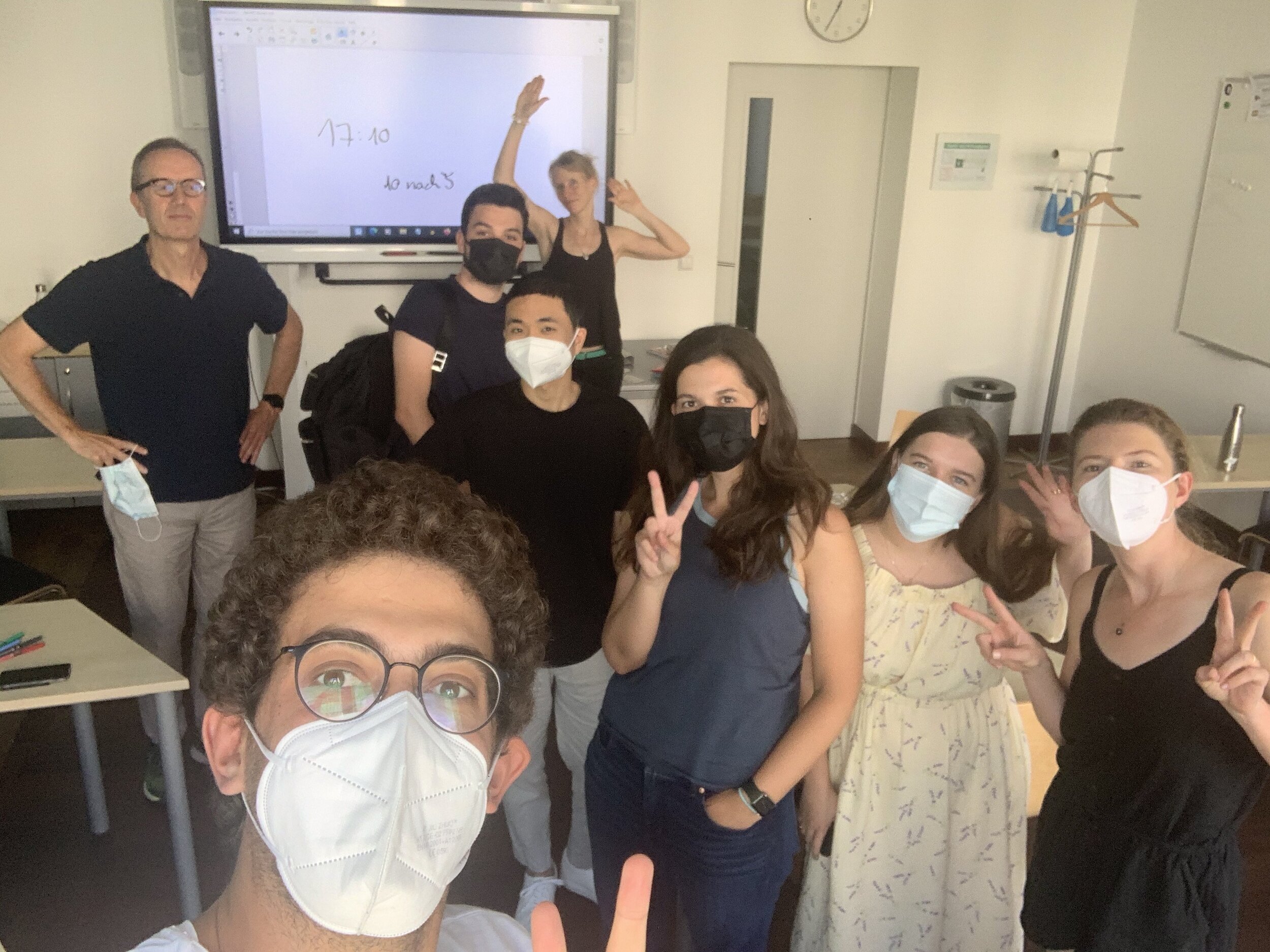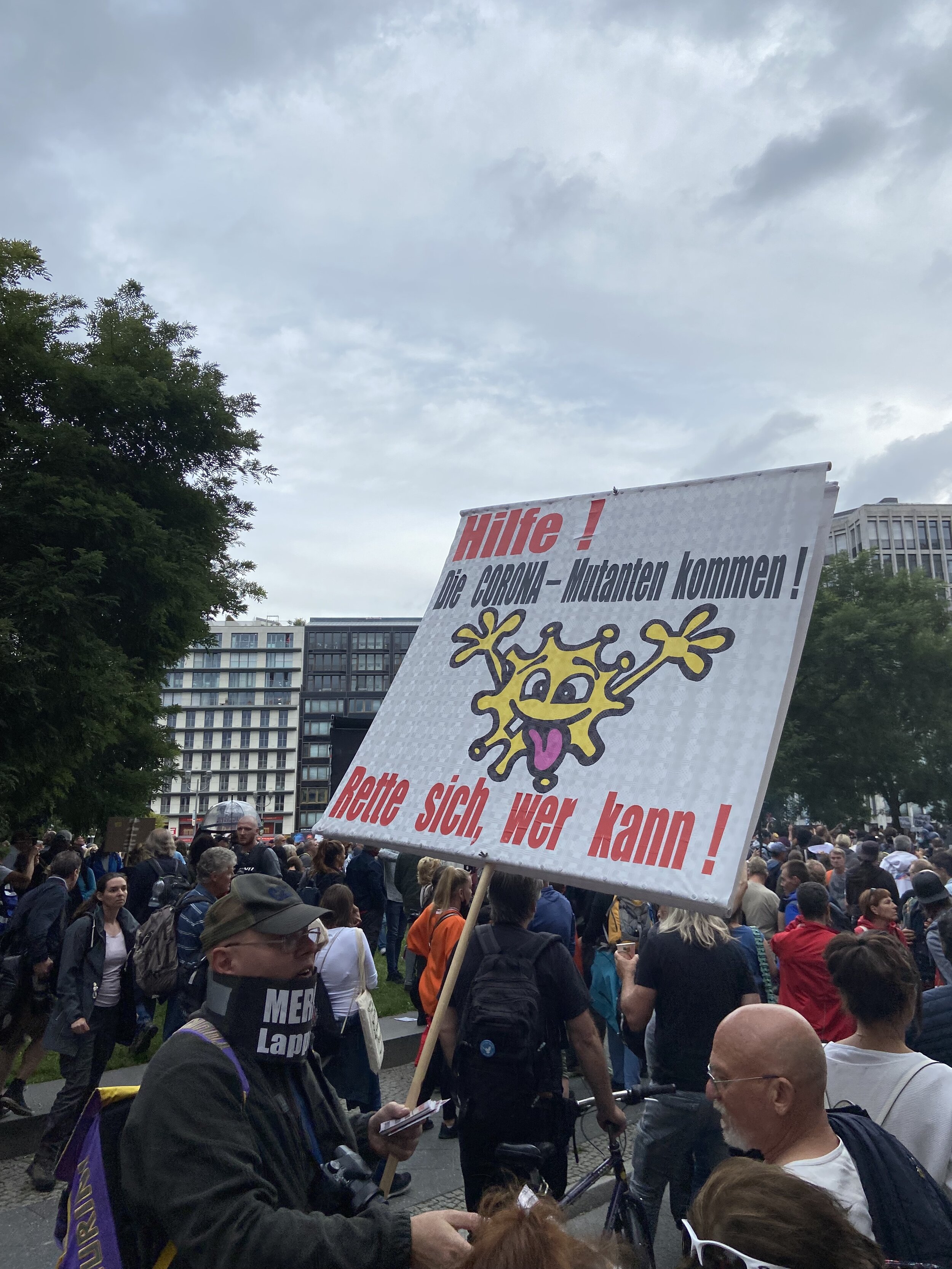A 'Rona Post
As I’m following the coverage of COVID numbers in the U.S.—of Georgia breaking its hospitalization record earlier this month—I feel like I’m living in an alternate universe.
While the number of infections per 100,000 people over the last 7 days in the U.S. is 324, in Germany it’s 77. 65% of Germany’s total population has had two shots, compared to 54% in the U.S.
But beyond those differences, I wanted to take a moment to dive into how daily life differs living in a pandemic in Germany has felt, compared to the U.S. I’ve gotten many questions about it from friends and family, so here go my non-epidemiologist observations.
First of all…masks.
In short: they are still very much a thing when you’re indoors, except while sitting at a table eating or drinking. And, people wear them. In fact, it’s common to see them on people’s wrists as they walk down the street, so they’re easy to take on and off.
My German language classmates and I (mostly) in our masks. At school we were required to mask up whenever we did partner work or were not at our desks. And those who weren’t vaccinated had to be tested twice weekly.
What isn’t a thing in Germany? Reusable cloth masks. That’s because on public transport in many places and on all German trains “medical masks,” or surgical masks and KN95s (or FFP2s as they’re called) are required. Bavaria was the first to set the most stringent mask requirement, of only KN95s for many settings at the beginning of the year.
As the COVID rates have fallen, surgical masks are now allowed as well in some places. But many people play it safe and just stick with the KN95s. It also means that there’s KN95 masks everywhere for sale, often for under 1 €. Even in vending machines. And there are many color options!
A “Hygiene Automat” featuring all the soap, sanitizer and masks your heart could desire.
(My former WABE editor Susanna Capelouto, who is German, was in Munich at the same time as me and made an interesting observation about Bavaria’s KN95 mask requirement, considering that it’s Germany’s conservative state.)
Another major difference in daily life has been the high use of my proof of vaccination app with a QR code. Because yes, you can get your American vaccine card uploaded into an app here if you go to a pharmacy.
And I have to pull it up all the time. You are expected to show proof of vaccination, proof of recovery from COVID or a recent negative COVID test to be allowed to sit inside at a dining establishment, go to any indoor gym, movie theater, and more.
Which brings me to this 3G/2G debate in Germany—an especially foreign concept to the U.S. because the Gs are German words: geimpft (vaccinated), genesen (recovered) and getestet (tested). The debate lies in whether this should change to 2G, to remove the negative test as an allowed way into indoor spaces, in an effort to encourage vaccination.
After some discussion, the 3G model largely reigns nationwide now, but some states have pushed forward with allowing businesses to use the 2G model. The federal government did announce that after October, they will no longer subsidize rapid antigen tests (because yes, they are free right now!), again to encourage vaccination.
(By the way, compared to Georgia at least, tests are very, very easy to get here. I’ve even seen testing tables set up on the sidewalk outside of pharmacies.)
It’s worth noting that there is also an anti-vaccination movement here too, among adults and for children. This group is often loosely called the “Querdenken” or “Lateral Thinkers.”
I’ve encountered several protests, including one by a brand new political party grown out of anti lockdown/mandate sentiment.
A scene from a protest by a new anti-lockdown/anti-mandate political party in Berlin.
“Help! The Corona Mutant is coming! Save yourselves, those who can!”


